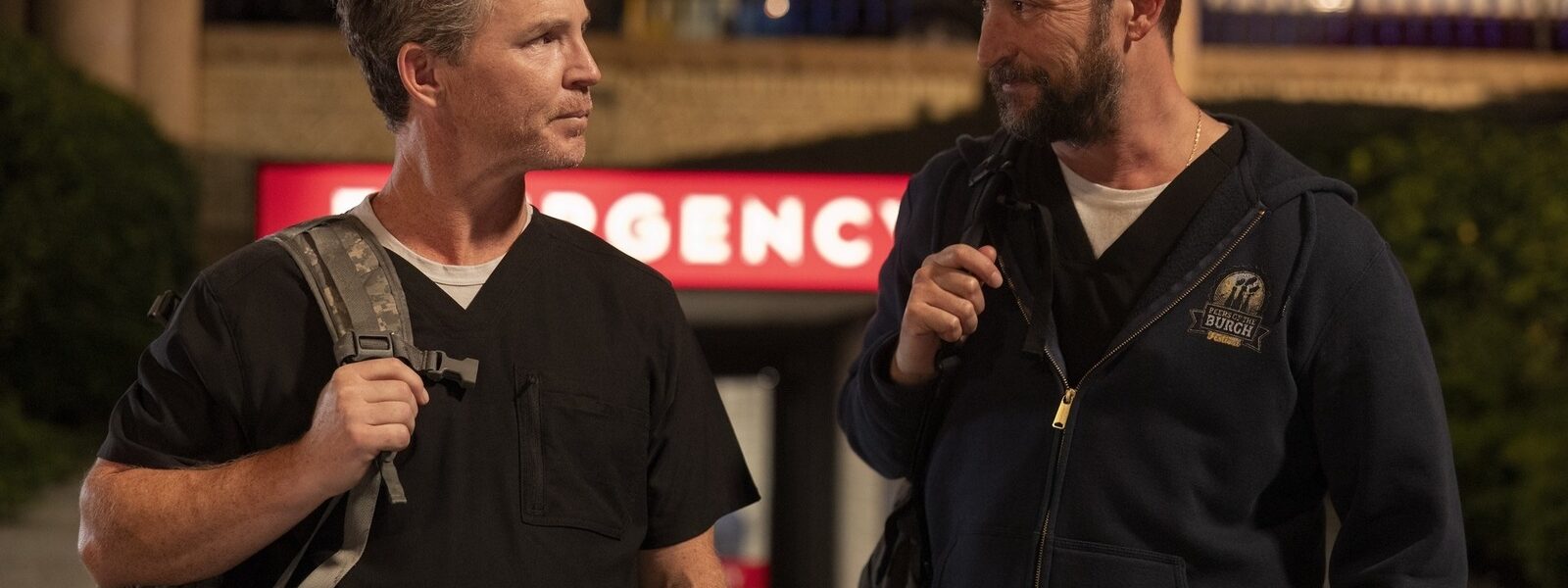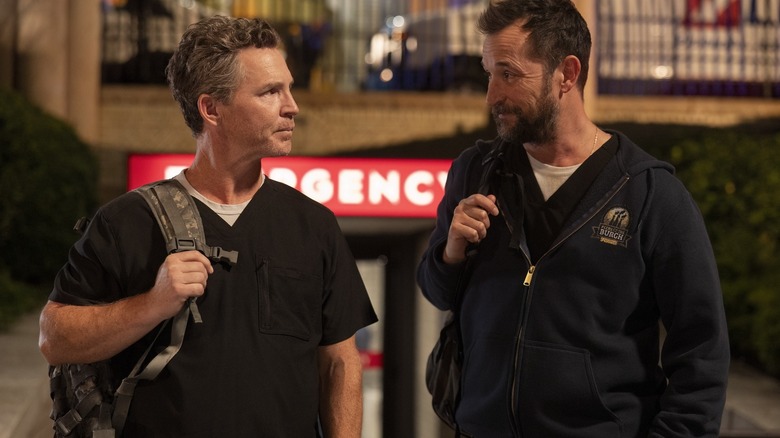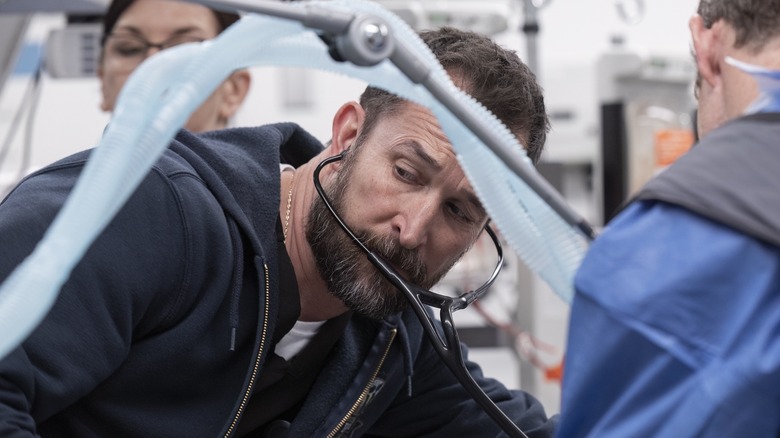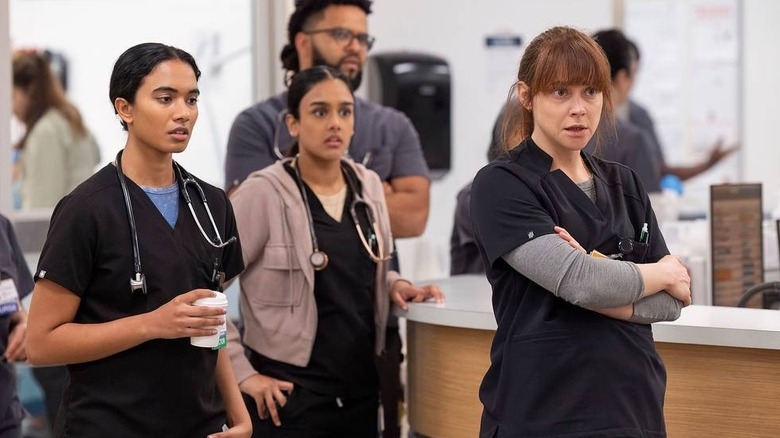What distinguishes the successful series of HBO Max “The Pitt” apart from other medical programs – including “ER”, a show that paved the way for “The Pitt” in many ways but made not Inspire it as a spin-off, for legal reasons – is its unique narrative structure. Throughout the first season, which started in January 2025 and ended in April, we followed the traumatized doctor, Dr. Michael “Robby” Robinavitch (Noah Wyle, who helped create the series and works as an executive producer) through a quarter of 15 hours in an emergency room crowded in Pittsburgh. Each episode takes place “in real time”, with the season starting at 7:00 am and ending at 10:00 pm, so why Wyle, executive producer and director John Wells, and Showrunner R. Scott Gemmill, who all worked together on “ER”, offer this exact vanity?
“We have sort of done … in a way the daddy of all medical emissions,” said Gemmill during an episode of the Podcast by Emily Silverman “The nights” Alongside his collaborator Joe Sachs (who worked on “ER” and is also part of “The Pitt”) and Mel Herbert, the founder of EM: RAP, who helps support medical education specifically for emergencies.
“So when the opportunity took place to revisit by doing another medical program, the one we wanted to do completely different, she looked at, how can we tell these stories differently from what we have in the past?” Gemmill continued. “And once it has become a streamer, because it was HBO Max who asked, we already knew that it was going to be different in terms of what you can show the language, but also in terms of number of episodes you do.” He continued:
“So we watch shows that are now [six to eight episodes, 10 to 12 episodes] Perhaps is the most, and if we were not streaming, I don’t know if I would have had this idea, but it was because it was 12 episodes, and the change is 12 hours, it seemed to be a really logical adjustment. And the more we think about it, even if it seemed a fairly intimidating task at the beginning, the only thing that, I think, differentiates the emergency service from other forms of medical practice is the temporal element. People come to the emergency room, sometimes through the ambulance service, where time is gasoline. “”
The real waiting times in the emergency rooms have helped inspire the frame of the Pitt
In the end, R. Scott Gemmill says that the concept of time was enormous for “the pitt” because things take a while in a real emergency room; Throughout season 1 of the show, we watch the same patients receive treatment in several episodes and also see people throwing adjustments in the waiting room because they have not yet been seen. As Gemmill said, it is a phenomenal way to make sure that the spectacle remains as authentic as possible.
“Time therefore seemed to become such an important part of the whole process,” said Gemmill. “One of the things with emergency doctors, and these guys can talk about it much better than me, but it is how often they have retired in another situation, another case, someone else needs them every three to five minutes, they are on something else. So, this has become really important, because we talked earlier about authenticity.
Gemmill said that this presented understandable challenges – we can imagine that, you know, the casting had to seem that it was only one day despite the time to pass during the shooting – but everything paid generously. “And as difficult as it was, and we were not sure that it was going to work, I think it really raises the show,” he concluded. “It is very difficult to capture this feeling of emergencies, because it is so alive and so electric, and it happens so much. And seemed if we had taken the public in this environment and we did not let them go out, we are not going to trade breaks. We are not going back two hours later.”
“We are not going at all in their privacy,” said Emily Silverman. “No, and so it’s a bit like Robby couldn’t find the time to use the toilets. The public is not lucky enough to move away. They juggle cases in the same way as doctors, and I think it really helps you to attract narration, because you cannot leave before this time when this change is finished.” Silverman is right; This makes “the pitt” particularly captivating to watch it take place in “real time”.
A writer on the Pitt says that the concept in real time helps continuity and lines through
Joe Sachs, who works as a co-executive producer and wrote several episodes of season 1 of “The Pitt”, then weighed and said that the “real-time” element helps to create tensions throughout the show. “The other thing that real time allows us to make people guess the public,” said Sachs. “When you meet a patient, will this patient be one and do [in] An episode? Will this evolve in something that will last four episodes or eight episodes or 15 episodes? It’s just the mixture of everything that is happening and paying attention to what’s going on. And clever viewers could look in the waiting room in episode one or two and see someone sitting there who becomes a major character on the four or five time, that we simply pay the actors to sit in the waiting room for a scene and then come back much later. “”
“And likewise, when Scott and Noah and John approached me for the first time about emergency medicine in 2024, I said: [we’ve got] To come and see a waiting room wrapped in the branchies, “Sachs continued, talking to the very disturbing reality.” We must enter and see each thumb of wall space filled with boarding patients who cannot go upstairs because there is no place upstairs, and we have done this, and the intensity of the volume is real, and I think that is what people respond. “”
Sachs continued by saying that an artist who plays a nurse in the background of “The Pitt” worked as an accusation nurse at the UCLA Santa Monica. They used to follow these patients with pension, who refer to admitted patients, but for whom the hospital does not yet have a room. It ended up presenting Yet another A challenge in a way for all substantive actors, according to Sachs, speaking to the fact that People working on “The Pitt” had to be ready to be in front of the camera. “And then the background artists, also known as Extras, when they presented themselves for the first time:” Oh, I would like to work on this program “Well, if you are going to be a patient on board, you will be in your Gurney for the next seven months, because we will film 15 episodes, and you will be seated in Gurney all the time,” said Sachs. “It is therefore another interesting aspect of production.”
Frankly, all the backstage details of “The Pitt”, ” A series engaged in medical accuracyare fascinating, and it is only another piece of the puzzle. Season 2 should be presented in first in January 2026, and season 1 of “The Pitt” is in trouble on HBO Max now.








